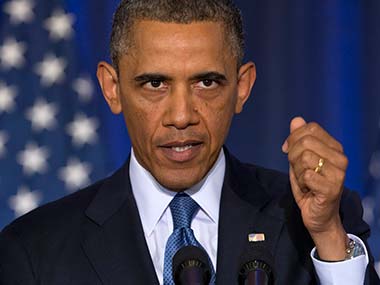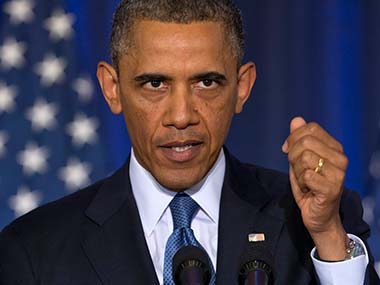The United States’ president, Barack Obama, has ordered limited airstrikes against ISIS coupled with humanitarian aid to the Kurds. According to the New York Times, the tipping point for Obama’s decision appears to have been the looming humanitarian disaster in Iraq. Much as the United States may want to retreat from the Middle East, the region keeps on dragging it back. The question is: are the limited airstrikes going to be the prelude to a wider and broader US re-engagement with the Middle East-especially Iraq? What kind and sorts of conflicts would the United States have to countenance in the region? Are the air strikes merely a tactical sideshow to broader strategic objectives? Will the Middle East be the much touted Vietnam for the country in the 21st century? Nothing can be said for certain. However, there is a danger that the United States might get trapped into a wider and deeper conflict matrix in the Middle East. The reasons pertain to the very volatile nature of the region and the various pulls and pressures on the United States to get enmeshed in the various conflicts of the region. [caption id=“attachment_1656863” align=“alignleft” width=“380”]
 Associated Press[/caption] Even though the current conflicts are in the nature of ‘new-old’ conflicts, some parallels can be drawn with the conflicts of yore. As the Cold War formed the context of regional and sectarian conflicts of the pasts, the Middle East, on account of factors peculiar to it, have either sought American engagement or wanted to expel the country from the region. The 1983 attack on US marines and its motivations is one example of this. The premise behind the attack was neither clearcut, nor was it mono-causal. Internecine strife in Lebanon, the Syrian connection , the tribal nature of aspects of the conflict and the tribal balances and imbalances of power were amongst the most salient reasons. These were overlain by the structural rivalry or the Cold war between the United States and the former USSR. Now that the Cold War is over, what is the ‘mix’ of factors that make the Middle East the region that it is? First, there is the Syrian issue. Whilst the butchery carried by the Assad regime may have abated given the advances made by ISIS, Syria continues be in strife and deep trouble. Iran’s recent quiescence while a tad strange is not inexplicable. It has not made any overt attempts to be a player in the Israel- Palestinian flare up. The cards are not stacked against it and the country may stand to gain the most from the current turmoil in the Middle East. The balance of power, even though ISIS poses a threat to it, appears to have shifted to Iran. The country is also likely to get a reprieve from the West’s pressure on it regarding its alleged nuclear program. The current condition then is in the nature of a breather to Iran. The evolving conflict however, makes matters more complex for Saudi Arabia: the country needs to worry about the extended deterrence accorded to it by the United States and the increasing irrelevance of this deterrence paradigm. Moreover, ISIS is likely to have Saudi Arabia in its cross hairs too. Will the country go nuclear? Improve its defence capabilities or hard power? Or will it seek more acute American assistance and help? The Arab Spring which started in Tunisia and engulfed Egypt is dead. A security oriented approach by the United States towards the Middle East and even North Africa will be welcomed by its regimes. Egypt will neither feel the pressure to change its deep state nor the incumbent regime. Some Iraqis or what is left of them, might want American intervention or the presence of boots on the ground. So would Kurds. Others will detest and loath it and want to fight them. All in all then, the sole superpower is likely to get drawn in the conflicts of the 21st century: intra not inter state conflicts. In these conflicts, the conventional war fighting approaches and capabilities will not suffice. Counter Insurgent warfare or to paraphrase a British General Rupert Smith,’ Wars among the people’ will be the name of the game. Is the United States up for these conflicts? No, if the wars in Afghanistan and Iraq are held to be the analogues of these conflicts. In a different permutation and combination, the stage is set for United States’ re-engagement with the Middle East-albeit in a conflictual idiom. Will this help the Middle East? ‘Unlikely’, is the answer. Whilst the region needs to engage more vigorously and pro-actively with the world, a conflict laden engagement will spell gloom and doom for the region. This will be the sad and perverse reality of the region for a long time to come.
Associated Press[/caption] Even though the current conflicts are in the nature of ‘new-old’ conflicts, some parallels can be drawn with the conflicts of yore. As the Cold War formed the context of regional and sectarian conflicts of the pasts, the Middle East, on account of factors peculiar to it, have either sought American engagement or wanted to expel the country from the region. The 1983 attack on US marines and its motivations is one example of this. The premise behind the attack was neither clearcut, nor was it mono-causal. Internecine strife in Lebanon, the Syrian connection , the tribal nature of aspects of the conflict and the tribal balances and imbalances of power were amongst the most salient reasons. These were overlain by the structural rivalry or the Cold war between the United States and the former USSR. Now that the Cold War is over, what is the ‘mix’ of factors that make the Middle East the region that it is? First, there is the Syrian issue. Whilst the butchery carried by the Assad regime may have abated given the advances made by ISIS, Syria continues be in strife and deep trouble. Iran’s recent quiescence while a tad strange is not inexplicable. It has not made any overt attempts to be a player in the Israel- Palestinian flare up. The cards are not stacked against it and the country may stand to gain the most from the current turmoil in the Middle East. The balance of power, even though ISIS poses a threat to it, appears to have shifted to Iran. The country is also likely to get a reprieve from the West’s pressure on it regarding its alleged nuclear program. The current condition then is in the nature of a breather to Iran. The evolving conflict however, makes matters more complex for Saudi Arabia: the country needs to worry about the extended deterrence accorded to it by the United States and the increasing irrelevance of this deterrence paradigm. Moreover, ISIS is likely to have Saudi Arabia in its cross hairs too. Will the country go nuclear? Improve its defence capabilities or hard power? Or will it seek more acute American assistance and help? The Arab Spring which started in Tunisia and engulfed Egypt is dead. A security oriented approach by the United States towards the Middle East and even North Africa will be welcomed by its regimes. Egypt will neither feel the pressure to change its deep state nor the incumbent regime. Some Iraqis or what is left of them, might want American intervention or the presence of boots on the ground. So would Kurds. Others will detest and loath it and want to fight them. All in all then, the sole superpower is likely to get drawn in the conflicts of the 21st century: intra not inter state conflicts. In these conflicts, the conventional war fighting approaches and capabilities will not suffice. Counter Insurgent warfare or to paraphrase a British General Rupert Smith,’ Wars among the people’ will be the name of the game. Is the United States up for these conflicts? No, if the wars in Afghanistan and Iraq are held to be the analogues of these conflicts. In a different permutation and combination, the stage is set for United States’ re-engagement with the Middle East-albeit in a conflictual idiom. Will this help the Middle East? ‘Unlikely’, is the answer. Whilst the region needs to engage more vigorously and pro-actively with the world, a conflict laden engagement will spell gloom and doom for the region. This will be the sad and perverse reality of the region for a long time to come.
US airstrikes on ISIS: Is Middle East going to be Obama's 21st century Vietnam?
Wajahat Qazi
• August 9, 2014, 11:16:30 IST
Are the air strikes merely a tactical sideshow to broader strategic objectives? Will the Middle East be the much touted Vietnam for the country in the 21st century?
Advertisement
)
End of Article